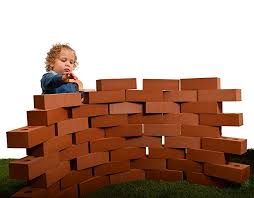In terms of content schools today provide subjects with information that is generally static in the sense that it is purely academic. This can be seen in the range of subjects students take at IGCSE or O'level. These subjects tend to be a precursor for what they may later study at university.
The problem that arises is that after 12 or 13 years of study there is very little practical real-world knowledge [ i.e. what makes it go knowledge] students have gained. Students emerge with certificates, however, have little or no basic knowledge of how an internal combustion engine works, but they ride in boats, cars and buses regularly, they see people board planes and see them fly, but they have little or no knowledge about how jet engines work or how wings on a plane generate lift and how other methods for generating lift can be found, they live in homes and enter buildings everyday but have no idea of how a brick is made, what materials it consists of or how it should be laid to construct a house, shelter or building, or even how the water emerges from a tap when they open it, they wear clothes everyday but are clueless about fabrics, dyes and how clothes are made, they eat food but often have no useful knowledge about how to prepare or cook it, they live in a world driven by finance but have no-idea how this impacts on their lives and the productivity of businesses, they watch television and yet have no idea about electronics and how broadcasting works, they use computers and smart phones but know little or nothing about coding and how computer languages run applications they use everyday, they see automation in action everywhere and yet have little or no knowledge about robotics. In other words they know little or in many cases nothing about what makes it go, despite more than a decade of education in public and private schools.
In IGL there must be integration between academic content and real life applications for instance exercises in maths during class may involve solving problems to do with quantity surveying that is in turn linked to a project the class is working on to learn a trade or if the concept of pressure and fluids is being taught in class it should be linked to the hydraulic braking system of a car the class is in the process of taking apart. In other words, schools have to find ways of taking the O'Level and A' Level curriculum and what is taught in it, be it algebra or calculus and infuse or integrate this academic content with real life situations and conditions where this knowledge is applied with the result being students gain academic knowledge but also a real life application of what they learn that in turn, after 12 or 13 years of learning becomes a trade as well as a genuine knowledge of how the world around them actually works.
There will be no real change to academic content, however, this content has to be applied in the sense that it is taught using an approach that is integrated with real life applications with the result being students emerge with a foundation for diverse trades. Through these trades they should also be able to demonstrate a thorough understanding of the academic content in the Grade 7 curriculum.
 |
| What appears as child's play, fun and games can eventually become real life skills by being scaled up to a trade |
This exposure to how things are made and work should gradually move to a point where they are on par with a professional level of understanding when they graduate from secondary school/high school with further certification in the 10 Trades. This is with the intent that the students will have a greater grasp of O' Level and A' Level academic content integrated with the 10 Trades than a student whose learning has been purely academic. Students should consequently not only graduate with academic certifications but with useful trades and have a fundamental, real world, knowledge of how the world around them works and a healthy encouragement to improve on what they find as they move on to college, university or on to work.
 |
| The 10 Trades will include learning how to code which should begin from pre-school through integrated learning |
Applied materials does not simply focus on working with organic and inorganic materials such as brick and mortar, steel or what students can rear or grow such as meat, vegetation and plants. It encourages students to see how applied materials can be used, created and improved from and for these activities. If students are introduced to aquaculture, for instance, they should not simply approach it as the business of raising and selling fish, but by raising agriculture and other process to the level of applied materials constantly look for new applications for the materials they find or grow, for example, finding real world uses for the tonnes of fish scales that are a by product of fish farming that often goes to waste. If the fish industry sells tonnes of undressed fish students may be encouraged to look at various degrees of dressed fish where the scales, intestines and waste are removed to direct to value addition such as building material, pet food and organic fertilizer respectively. Applied materials introduces students to conventional methods in building, agriculture and so on, but encourages them find new methods for these activities as well as new applications for the produce or output from organic and inorganic processes they are taught.
The 10 trades in IGL that will be integrated with academic content are as follows:
 |
| Hands on real world knowledge integrated with academic information to create an education second to none |
No comments:
Post a Comment